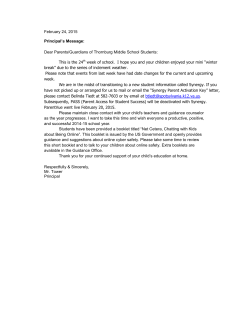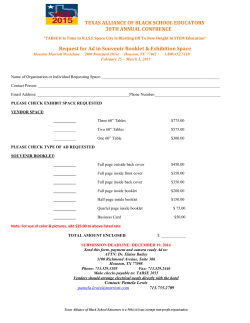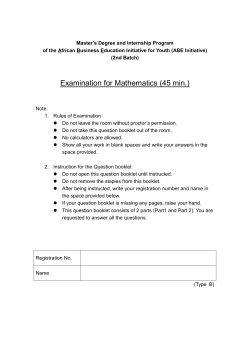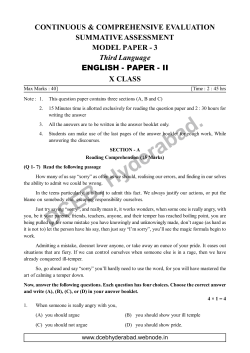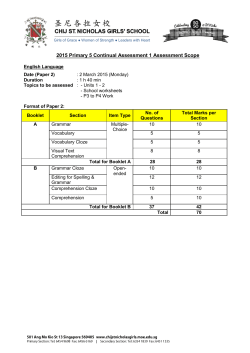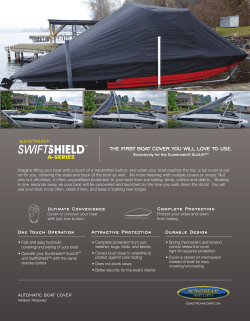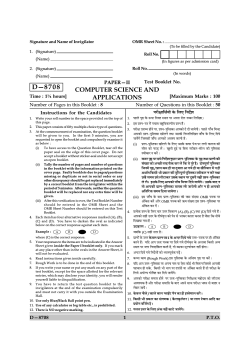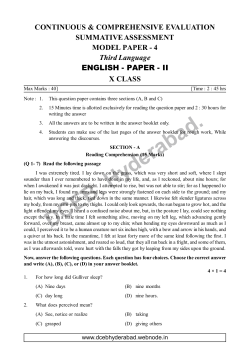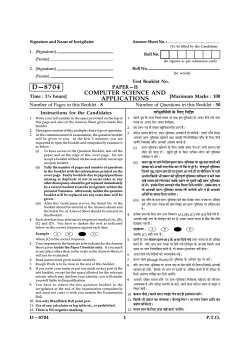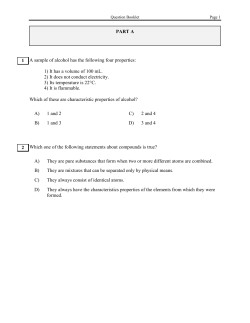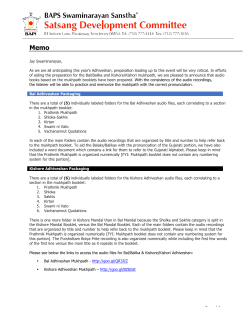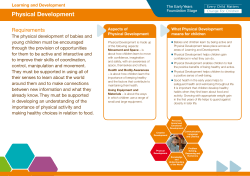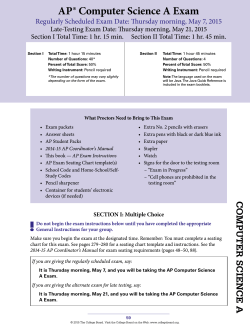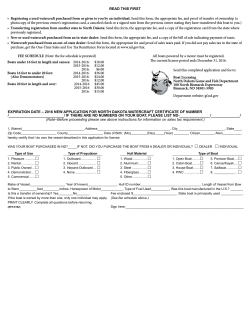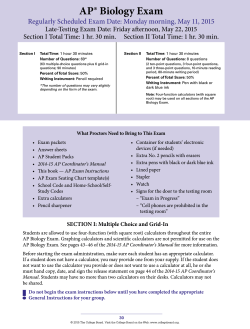
D031/2 DELTA MODULE ONE Sample Test PAPER 2
Centre Number Candidate Number Candidate Name UNIVERSITY OF CAMBRIDGE ESOL EXAMINATIONS English for Speakers of Other Languages DELTA MODULE ONE Understanding language, methodology and resources for teaching D031/2 Sample Test PAPER 2 Additional materials: Answer booklet TIME 1 hour 30 minutes INSTRUCTIONS TO CANDIDATES Write your name, centre number and candidate number in the spaces at the top of this page. Write these details in the spaces provided on your answer booklet and on any separate answer paper used. Do not open this booklet until you are told to do so. This paper consists of four tasks. Complete all tasks. Write your answers in the separate answer booklet. Use a pen. You may write on the question paper, but you must write your answers in pen in the answer booklet. You will have no extra time for this, so you must finish in one hour and thirty minutes. At the end of the test, hand in both the question paper and the answer booklet and fasten any separate paper used securely to the answer booklet. INFORMATION FOR CANDIDATES Suggested timings are indicated for each task. This paper consists of 7 printed pages and 1 blank page. v3.0 © UCLES 2008 2 Task One (20 minutes) The text for this task is reproduced on the opposite page. It is two parts of the Cambridge ESOL Preliminary English Test (PET) Writing test. PET is set at level B1 on the Common European Framework of Reference for Languages. It is being used in the following situation: J is a receptionist in a hotel and needs to improve her English to make her more effective at work. She feels least proficient in writing in English. She needs to write emails to clients. She is at Low Intermediate level and her teacher has suggested she work towards the PET exam in order to improve her writing. Using your knowledge of relevant testing concepts, evaluate the effectiveness of the tasks for this learner in this situation. Make a total of six points. You must include both positive and negative points. Write your answer in your answer booklet. 5 4 3 2 1 since It was ……………………………........ every day of the boat trip. The sun shone every day of the boat trip. The boat ……………………………........ a small kitchen. There was a small kitchen on the boat. We were not ……………………………........ fish in many parts of the river. We could not fish in many parts of the river. The boat moved very ……………………………........ down the river. The boat did not move very quickly down the river. We spent a long time ……………………………........ where to go. It took us a long time to decide where to go. 0 It was two years ……………………………........ we had been on a canal boat. We had not been on a canal boat for two years. Answer: 0 Example: Here are some sentences about a holiday on a canal boat. For each question, complete the second sentence so that it means the same as the first. Use no more than three words. Write only the missing words on your answer sheet. You may use this page for any rough work. Questions 1-5 Part 1 [Turn Over Write 35-45 words on your answer sheet. invite your friend to visit you. explain why you are moving x x say where you are moving to x Write an e-mail to an English friend of yours. In your e-mail, you should You are going to move to a new flat. Part 2 Writing Question 6 13 12 [Turn Over 3 Turn Over► 4 The text for tasks two and three is reproduced on pages 5 and 6. Task Two (25 minutes) The purpose of the extract as a whole is to teach differences between the present continuous and the present simple to pre-intermediate level learners. a) Identify the purpose of the exercises in the box below in relation to the purpose of the extract as a whole. Exercise 3 Exercise 4 Exercise 5 Exercise 6 b) Identify a total of six key assumptions about language learning that are evident in the exercises in the box above and explain why the authors might consider these assumptions to be important for learning. You must refer to each of the exercises at least once, Task Three (10 minutes) Comment on the ways in which the vocabulary focus in the remaining material in the extract combines with the exercises discussed in Task Two. Write your answer in your answer booklet. 5 Unit 3B of face2face Pre-Intermediate, Chris Redston and Gillie Cunningham, Cambridge University Press, 2005, pages 22 – 23. Turn Over► 6 7 Task Four (35 minutes) Read the following quotes from teachers about using the students’ first language (L1) in the classroom. Teacher 1: ‘There’s an activity in the unit we were working on this morning which asks them to translate back to L1. I never do that one because I don’t see the point.’ Teacher 2: ‘I never use the students’ language in the classroom, even though I can.’ Teacher 3: ‘I have to use L1 in my class, otherwise everything takes too long.’ Teacher 4: ‘All my students tell me they want to speak English in class, but whenever we have a discussion, I can’t keep them in English.’ a What beliefs inform attitudes such as those expressed by the teachers in the quotes above? b What roles and procedures would teachers 3 and 4 need to adopt in order to encourage greater use of English in their classroom? c On what occasions might it be beneficial for either a teacher or students to use L1 in the classroom? Write your answer in your answer booklet. 8 BLANK PAGE
© Copyright 2025
